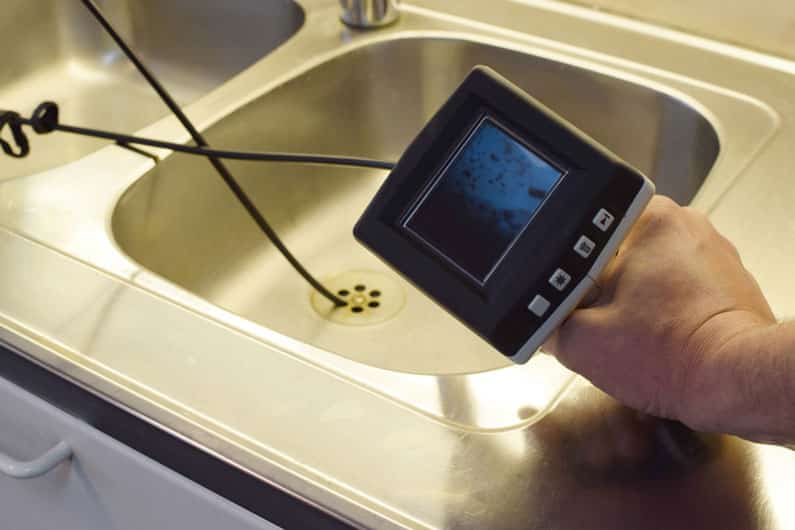There are several methods that can be used to unclog drains. In this post, we’ll explore these in more detail:
Manual Cleaning
There are 3 types of manual drain cleaning, these are as follows:
Cable and drum machine: This is the most used piece of equipment in drain cleaning. It consists of a long steel wire cable that comes with a cutting head on one end. The cable is inserted down into the drain, where it scrapes away stubborn clogs until the flow is restored.
Hand auger: This kind of auger has been around for a while now, but it’s still quite effective. It’s an important tool in any plumber’s arsenal and isn’t invasive—if your blocked sink or shower isn’t very far down the line, this type of auger is ideal. However, it can only clean drains up to seven meters, so this is something to bear in mind.
Plumbers snake: This is probably the oldest plumbing tool ever invented; unfortunately, it also happens to be one of the least favoured nowadays. Nevertheless, it gets the job done by grabbing and dislodging clogged pipe materials so that water can flow freely again.
CCTV Drain Inspection
CCTV drain inspection makes use of a high-resolution camera that’s attached to the end of a cable. The camera can see 50 or 60 metres ahead and is lowered down your drain. As it goes down, the plumber is able to assess the blockage as well as any damage to your pipes.
If a professional uses CCTV technology for their drains, they can inspect hard-to-reach areas without having to dig up your lawn or disrupt daily life. They’ll be able to find out exactly where the blockage is located and if there are any tree roots growing through.
Electro-Mechanical Cleaning
Electro-mechanical cleaning is a pretty interesting process, but it isn’t the most common method of unclogging drains. First, a motorised cable with blades at the end is inserted into the drain and switched on. The rotating action of the blades is meant to break up blockages in your pipes and carry them away with water pressure.
If you’d like to be more environmentally conscious while still using electro-mechanical cleaning, consider talking to a professional about methods that minimise waste and chemical use. This method only works on certain types of clogs (grease or hair, for instance) and could easily damage your pipes if operated incorrectly.
High Pressure Water Jetting
There are 2 types of high-pressure jet washers:
The power washer: This is a machine, like a garden sprinkler, which sprays high-pressure water onto your drain to break up the clog so it can be removed. It doesn’t come with the same guarantees of success as a plumbing company would provide, though, because it can damage your drains (which is probably why you don’t see these machines at hardware stores).
The gas-powered drain cleaner: This works by turning on the gas from inside your home with a device attached to your hose pipe that looks like an air gun or fire extinguisher. You connect this to your drains with another hose pipe and then press down gently on the plunger trigger to release the gas into the joint between the drain and pipe (the idea being that if there’s no space for liquid in one place, but there is somewhere for gas, then this allows it to flow through).
Air Pressure
Using air pressure to clear blocked drains works on the same principle as using water pressure to clear blocked drains—the only difference is the medium being used: instead of water, pressurized air shoots down into your drainpipe and pushes out whatever blockage or clogs have formed.
If you have drains that need unclogging, the professionals at FlowWise will be able to advise you on the best option. Visit our website today to arrange a consultation.
